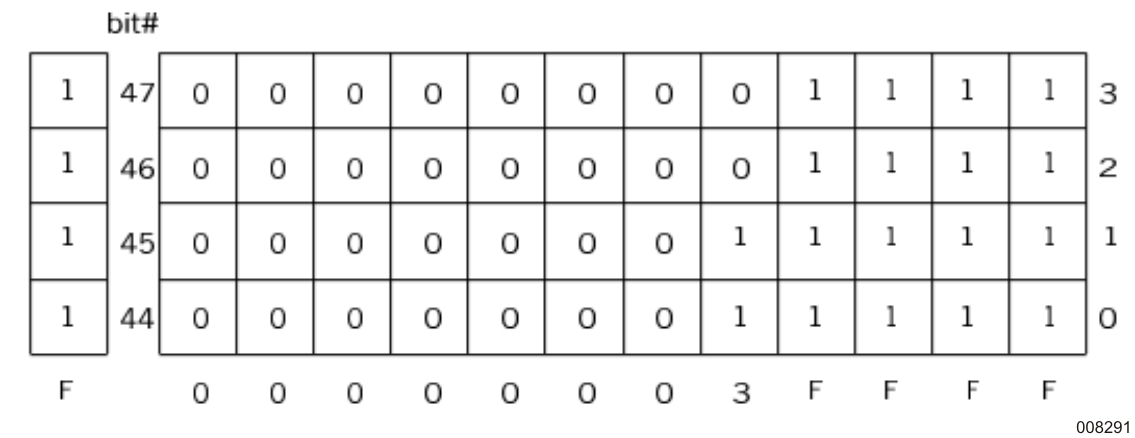The MASK command sets or examines the mask register. To search a dump for all words that contain a particular pattern of bits, use the MASK command with the PATTERN and SEARCH commands. The mask register modifies the pattern in the pattern register by masking certain bits in the pattern. The SEARCH command searches for all words that match the part of the pattern that is not masked. (Refer to the discussion of the PATTERN and SEARCH commands in this section.)
Syntax
── MASK ─┬────────────────┬────────────────────────────────────────────┤ ├─<simple value>─┤ ├─ ABSENTDESC ───┤ ├─ ABSENTCOPY ───┤ └─ MOMDESC ──────┘
Explanation
The following text describes the meaning of each construct. Refer to “Basic Constructs” earlier in this section for information about the <simple value> construct.
MASK
Displays the contents of the mask register. The default for the MASK register is 7 FFFFFF FFFFFF.
MASK <simple value>
Places a mask that can be expressed as a specified simple value into the mask register. A mask is a distribution of 1s and 0s in a 48–bit word and its 4–bit tag.
The mask indicates which bits are significant and which are irrelevant within the current pattern set by the PATTERN command. All bits in a mask that have a value of 1 are significant digits in the pattern. All bits in a mask that have a value of 0 are disregarded in the pattern. The mask most recently specified is stored in the mask register.
The mask can include the 4–bit tag for a word. To specify a TAG, use the concatenation form of the simple value; specify 12 hexadecimal digits and & <number> TAG. The tag value should be no larger than 15; however, if it is larger than 15, the tag value is placed in the tag using modulus 16. If no tag is specified, the tag is assumed to be 0.
Although the mask represents 48 binary bits and a tag value of 4 binary bits, it is displayed and is most often set in hexadecimal. Refer to Mask Word Example for a diagram of a word that contains a mask value, with its hexadecimal equivalent stated below it.
To indicate that the last 18 bits of the pattern word and its tag are significant, use the MASK 3FFFF & F TAG command. (Seven leading zeros are implied.) A display of the mask register shows the contents as F 000000 03FFFF.
The default for the MASK register is F FFFFFF FFFFFF; in this case, all bits including the four tag bits (represented by the leading F) are set to 1, and therefore are significant in the pattern register.
MASK ABSENTCOPY MASK ABSENTDESC MASK MOMDESC
Place a mask value appropriate for finding descriptors in the mask register. The same mask value is generated, regardless of whether the ABSENTCOPY, ABSENTDESC, or MOMDESC option is specified.
Examples
INPUT: MASK MASK: F FFFFFF FFFFFFF
INPUT: MASK ABSENTCOPY MASK: F C00000 000000
INPUT: MASK MOMDESC MASK: F C00000 000000
INPUT: MASK 123456789ABC MASK: 0 123456 789ABC
INPUT: MASK 1324 & 5 TAG MASK: 5 000000 001324


